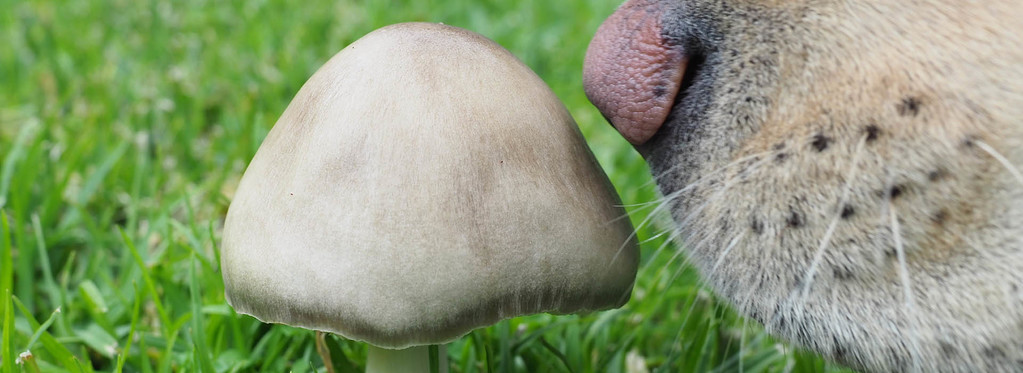There are many foods which are perfectly okay for humans to eat, but bad for dogs. Like onions, dark chocolate, or grapes. But do mushrooms fall into that category as well?
Can dogs eat mushrooms? Dogs can eat most of the same types of mushrooms that are edible for humans, in limited quantities. If your dog eats unidentified wild mushrooms, monitor them closely. Consult a vet if they exhibit symptoms including vomiting, diarrhea, abdominal pain, uncoordinated movements, or excessive drooling.
In this article, I’ll let you know which mushrooms are safe for dogs to eat, some of the more toxic varieties that need to be avoided, what to do if your dog has eaten wild mushrooms, and more.
Can Dogs Eat Mushrooms? Learn Which Mushrooms are Safe for Dogs

Determining which mushrooms are edible or poisonous is difficult for both humans and dogs alike.
Dogs aren’t necessarily very picky when it comes to what they eat. So they can get themselves into trouble by grazing on toxic wild plants and fungi.
To make things even worse, many toxic mushroom species exhibit strong scents that can actually entice dogs to eat them.
For example, the death cap mushroom has a strong fishy odor to it once it starts to decay.
Dogs can eat most varieties of edible mushrooms. But their stomachs don’t have the enzymes required to break down the sugars and fiber found in mushrooms, so you should cook any fresh mushrooms before feeding them to your dog.
This will help them digest the mushrooms better.
What Mushrooms Are Safe For Dogs To Eat?

Dogs don’t require mushrooms in their diet. On the one hand, they do contain lots of healthy compounds and edible mushrooms won’t do any harm.
But on the other hand, there aren’t any vitamins or minerals they can get from mushrooms that they can’t get from a high-quality dog food.
So you shouldn’t feel like there is any specific need to be feeding significant amounts of mushrooms to your dog on a regular basis.
Most dogs go through their lives without ever tasting a mushroom!
However, maybe you’ve got some extra mushroom leftovers from dinner and are wondering if it’s okay to give your pet one or two of them.
Or perhaps your dog seems to have a particular affinity for mushrooms and you want to treat them.
The good news is that dogs are able to eat the majority of mushrooms that are also edible for humans. The following mushrooms are okay for dogs to safely eat in small quantities:
- White button mushrooms
- Cremini mushrooms
- Portobello mushrooms
- Shiitake mushrooms
- Oyster mushrooms
- Maitake mushrooms
- Porcini mushrooms
- Chanterelle mushrooms
- Morel mushrooms
Dog’s bodies are more sensitive than humans when it comes to pesticides, chemicals, and toxins. So it’s best to shop for organic varieties of mushrooms if you plan on giving some of them to your dog.
This is a good idea for humans too, since mushrooms can soak up toxins and other unwanted compounds quite easily.
If you do decide to feed mushrooms to your dog, it’s best to not prepare them with lots of salt or seasoning, or with any heavy sauces. Simple food as close to nature intended is best for your pets.
Even sauteeing mushrooms in butter might be hard on your dog’s stomach, since they don’t have the enzymes needed to break down milk products as most humans have.
- Read my article about How to cook mushrooms in the right way here.
Can Puppies Eat Mushrooms?
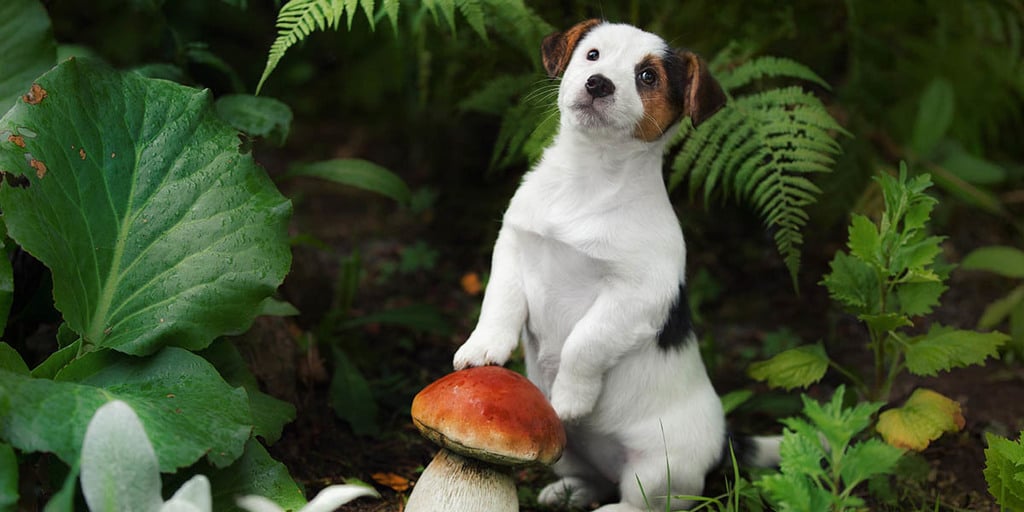
Once puppies have been weaned away from their mother and onto solid foods, they can start to safely eat mushrooms.
But it’s best to go slowly and only introduce them to a little bit at a time. Too much can cause indigestion.
Before you make your puppy a whole meal of mushrooms, it’s best to give them just a little piece first to see if they like it at all, and to make sure they aren’t allergic.
Some dogs just won’t like mushrooms no matter how you prepare them.
Puppies are extra eager to put just about any object they can find in their mouths. Tasting is how they explore the world.
So take extra care to keep puppies on a leash and be sure they aren’t eating any unidentified mushrooms while they’re out on a walk.
Which Mushrooms Shouldn’t You Feed Your Dog?
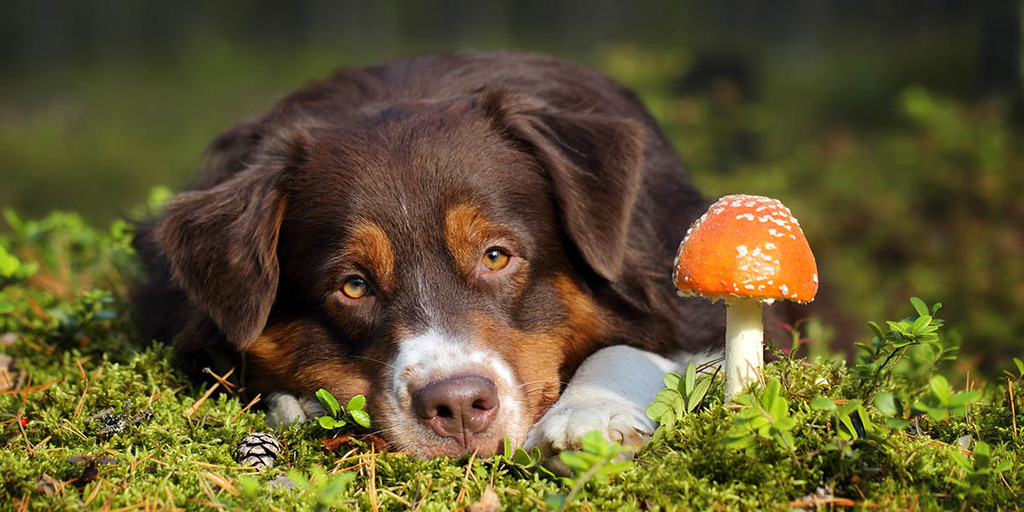
There are just as many or more species of mushrooms that are toxic or inedible as there are edible ones.
So as a general rule, I would avoid letting your dog eat any mushrooms that aren’t on the list above that you know are safe. And I’d steer clear of wild mushrooms in general.
Especially if you aren’t an expert mushroom hunter who can positively identify them.
If you’re walking in an area where you know lots of wild mushrooms grow, it’s best to keep your dog on the path and on a leash.
Be watchful for them reaching for fungi or any other potentially toxic plants off to the sides of the paths, and get them to spit them out right away if they pick them up.
Some species that are especially poisonous to dogs (as well as humans) include:
- Fly agaraic, aka Amanita muscaria. This is the classic toxic mushroom that has a red cap with white spots on it.
- The death cap mushroom, aka Amanita phalloides.
- Jeweled death cap, aka Amanita gemmata
- Deadly galerina, aka Galerina marginata
- All false morals, gyromitra species
- All clitocybe or inocybe mushroom species
Some signs that your dog may have accidentally eaten a toxic mushroom without you noticing include: Increased production of tears, saliva, and urine.
Severe stomach upset. And even tremors or seizures. Some toxic mushrooms may also make your dog seem sedated or extremely lethargic.
If you think that your pet has eaten any of these mushrooms, don’t waste any time trying to positively identify it. Get in touch with your veterinarian or a poison control center right away.
The usual protocol for a dog that a vet suspects has eaten mushrooms is to induce vomiting, and to get them to ingest activated charcoal to help absorb the toxins.
Your dog might also be put on liver-protecting and anti-nausea medications, as well as an IV fluid drip.
Not all varieties of poisonous mushrooms will affect your dog right away. Some may show signs of toxicity in about fifteen minutes.
For other mushrooms, it might be 6 to 12 hours after ingestion before you notice symptoms.
So it’s best to get them to a vet to check them out after eating unidentified mushrooms, even if they aren’t showing any symptoms yet.
It can help to bring some of the mushrooms with you to help with identification.
But in general, there aren’t really specific treatments your vet can give for certain kinds of mushrooms.
They will just generally try to remove the toxins from your pet’s body as best they can.
Can Dogs Be Allergic To Mushrooms?
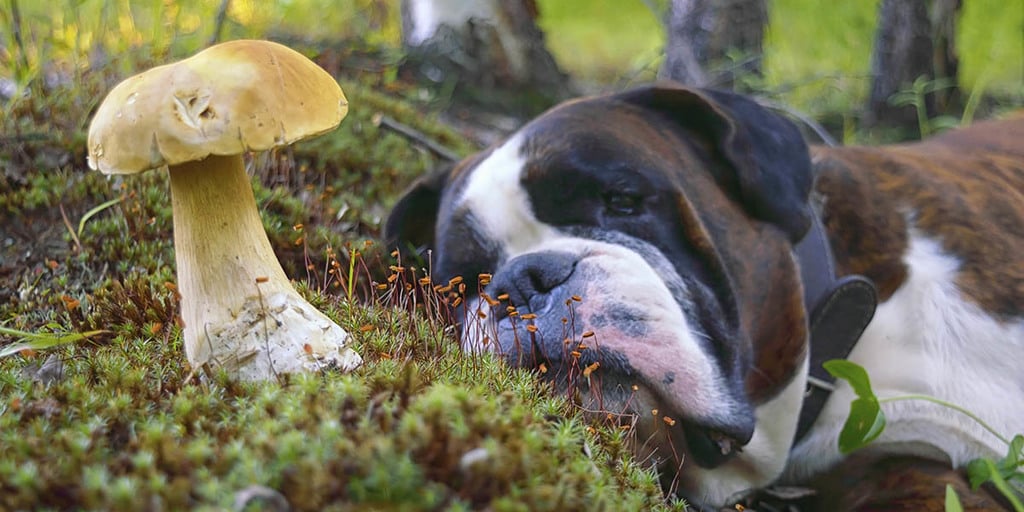
Dogs being allergic to mushrooms is rare. But just like with humans, it’s possible for them to be allergic to pretty much any kind of food.
When you give your dog mushrooms to eat for the first time, it’s best to start slow and only give a piece of one mushroom to start with.
See how they react, and you can give them more if they aren’t showing any signs of allergies or other issues.
Your dog might be allergic to mushrooms if they vomit after eating them. Especially if they vomit right away after consuming them.
Other signs that might take a bit more time to develop include skin problems or excess gas.
For a dog with a severe mushroom allergy, you might notice swelling on their neck or face, difficulty breathing, or hives. As well as an increased heart rate. Contact your vet right away if you notice these signs.
How Can You Prevent Your Dog From Eating Wild Mushrooms?
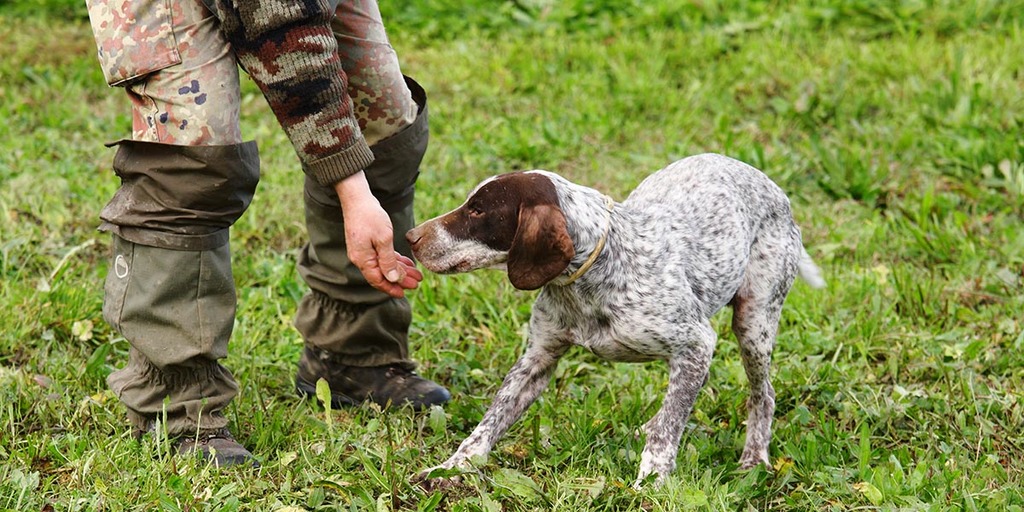
If your dog seems to want to grab any random mushrooms that they walk past, there are a few things that you can do to keep them safe.
You can start by avoiding wooded areas. Anywhere that’s warm and damp with lots of organic matter like leaves and dead logs will be a hotspot for mushrooms, especially if it has rained within the past few days in your area.
If you have to walk your dogs in these high-risk areas, be sure to keep them on a leash at all times. Don’t let them go running off into the tall grass where you can’t see what they’re doing or eating.
As a preventative measure, it’s good to teach your dog the commands to “leave” anything you don’t want them to touch, as well as to “drop” anything they pick up that you don’t want them to swallow.
If your dog absolutely loves scavenging on walks and you can’t seem to keep them from eating wild mushrooms and plants, you might want to consider a caged muzzle as a last resort, which will physically prevent them from grabbing toxic mushrooms and other flora.
How Can I Get Rid of Mushrooms In My Yard or Garden That My Dog Could Eat?
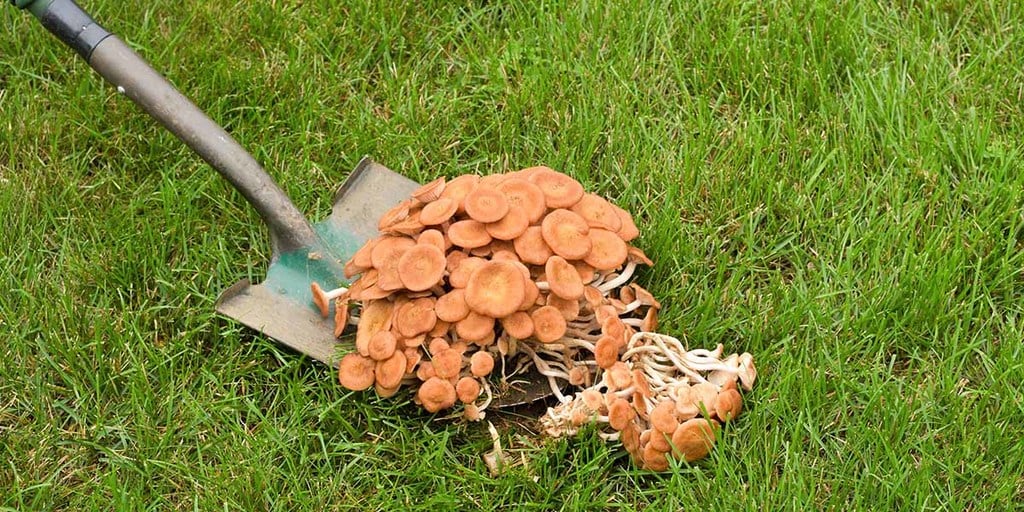
If wild mushrooms are known to grow in your yard or garden, you’ll want to check regularly to see if you can find any.
If you do, remove them right away and dispose of them before your dog has a chance to find them first.
It can be annoying to have mushrooms constantly popping up in your yard and having to worry about your dog eating them.
Your dog likely explores your entire yard multiple times every day when they go outside to go to the bathroom.
So if toxic mushrooms are growing on your property, your dog will find them, and is at risk of eating them.
To get rid of mushrooms in your yard, you can try adding some nitrogen fertilizer.
This will help to speed up the decomposition of organic matter, so it will be gone before mushrooms have a chance to feed on it and grow.
Adding about 450 grams (1 pound) of nitrogen to every 1,000 square feet of your lawn every year in the spring should do the trick.
Just be sure to use a mix that is pet-safe, or keep your dogs out of the area for a few days until the fertilizer has been fully absorbed.
For hotspots where lots of mushrooms seem to spring up in your yard, you can use soap and water to try and kill them off. Mix a few tablespoons of dish soap into 5 liters of hot water.
Then poke holes a few inches down into your soil using a hand trowel or screwdriver around the area where mushrooms like to grow.
Pour the soapy water into the holes and it should reduce or eliminate your mushroom problem.
You can also prevent mushrooms from growing in your yard where your dog can reach by not letting it get too wet or shady.
Rake up any grass clippings or leaves, and prune or thin trees around your yard to allow for more sunlight.
Do Mushrooms Have Health Benefits For Dogs?

Mushrooms are a healthy food that are full of nutrients. Just like for humans, eating mushrooms can potentially have health benefits for dogs.
They’re full of vitamin D, various B vitamins, riboflavin, manganese, antioxidants, dietary fiber, potassium, phosphorus, and other beneficial substances.
Mushrooms can help to create stable blood sugar levels, lower cholesterol and blood pressure, help with weight loss, and boost their immune system.
But if your dog is eating the appropriate amount of a well-rounded high-quality dog food, they shouldn’t need to have mushrooms supplemented into their diet.
If your veterinarian does suggest that your pet has any adverse health issues, then adding mushrooms to your dog’s diet won’t likely be one of their suggestions.
Instead, they’ll probably suggest changing your pet’s overall diet or putting them on medication.
So while mushrooms are healthy and nutritious for dogs just like humans, I wouldn’t rely on adding mushrooms to their diet for potential health benefits.
If you do feed mushrooms to your dog, it’s best to stick to fresh varieties. These will contain more nutrients than their preserved or canned equivalents.
Can Cats Eat Mushrooms Too?

If you’re giving your dog a tasty mushroom snack, you might notice your cat looking on with jealousy, and wonder if you can give them some mushrooms as well.
Just like with humans and dogs, most of the mushrooms that are edible for us will also be edible for cats. And most mushrooms that are toxic for us will also be toxic for cats.
So your cat can enjoy a treat of button mushrooms or other edible mushrooms that you eat yourself.
You might even notice that your cat becomes interested when you’re cooking with mushrooms in the kitchen, and they might even try to sneak up on to the counter to take a bite.
Just like how most cats will suddenly appear when you open up a can of tuna.
Cats don’t have the tastebuds to taste sweet things, but they do love things with meaty and savory flavors.
Mushrooms contain an amino acid called glutamate that gives them exactly this flavor, so many cats really enjoy them.
What Other Foods Are Dangerous For Dogs?

Aside from toxic varieties of mushrooms, there are some other foods that you should never feed to your dog.
Chocolate is one of the more commonly-known foods that dogs shouldn’t have. It contains a substance called theobromine that doesn’t affect humans, but it’s poisonous to dogs. Dark chocolate is especially bad.
Garlic and onions are both bad for dogs too. They damage a dog’s red blood cells and can lead to anemia.
Grapes and raisins also definitely need to be avoided, as they’re known to cause kidney failure in dogs. As little as one or two grapes is enough to make smaller dogs really sick.
Cheese and other dairy products are worth avoiding as well. It might be okay to use a piece of cheese to give your dog a pill every once and a while.
But dogs don’t have the stomach enzymes needed to break down dairy. So if you give them large amounts, or on a regular basis, they may vomit, or have diarrhea or other stomach issues.
Conclusion
Dogs can enjoy small amounts of cooked edible mushrooms as a treat.
Avoid giving them raw mushrooms, as these can be hard to digest. Also avoid giving them cooked mushrooms in rich buttery or salty sauces, or mixed with other ingredients like garlic that dogs shouldn’t eat.
Don’t let your dog eat wild mushrooms, because there’s no knowing which are toxic and poisonous.
If you’re walking your dog in a wooded area where mushrooms are likely to grow, keep them on-leash and watch them carefully to make sure they don’t pick anything up.
If you suspect that your dog has eaten a toxic mushroom, call your veterinarian or a poison control center right away for further instructions.
If you’ve got a pet cat, you might want to try giving them a piece of cooked mushroom to see how they like it as well. Cats like meaty, savory, and umami flavors like those found in all varieties of mushrooms.
If you still have questions or want to learn more about mushrooms read my articles below:
